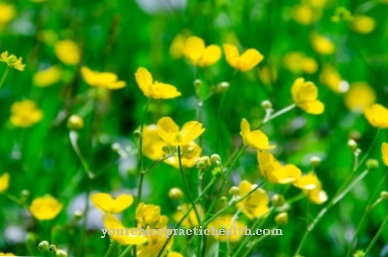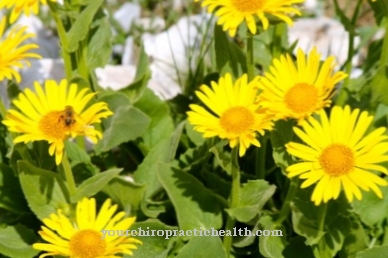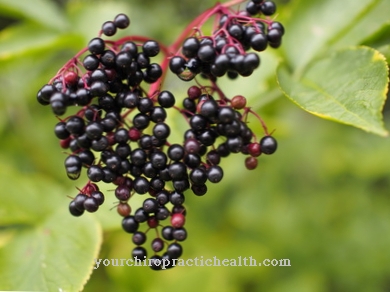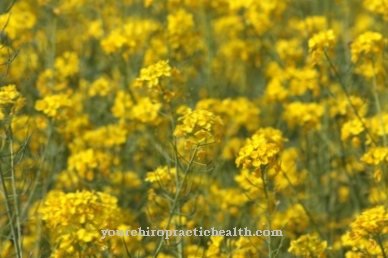Various medicinal plants are able to alleviate physical complaints. These include, for example Eyebright. The name of the plant also refers to one of the areas of application. There are no side effects to be expected from the use of eyebright.
Occurrence & cultivation of eyebright

Eyebright belongs to the summer root family. There are around 350 different species of the plant in total. It can be found particularly frequently in the northern hemisphere. It grows in almost every European country. The plant prefers clearings, mountains or roadsides.
The plant claims a size of about 10 to 20 centimeters and is a member of the semi-parasite family. It feeds on the liquid from certain grasses. If the eyebright is unable to become active as a parasite, it can still survive. Eye grass is still considered a weed by farmers, it removes minerals from other plants, but is not touched by animals due to its bitter substances.
The leaves of the plant are egg-shaped and have three to six teeth. The chalice is striped white and purple. Eyebright is used for various ailments. Although the external appearance is often considered less noticeable, the active ingredients can alleviate certain physical phenomena. To use the plant as a remedy, the collection period between July and October is recommended.
Effect & application
The healing effects of eyebright actually focus on discomfort in the eye area. These include barley, eyelid inflammation, conjunctivitis, eye strain, hay fever or dark circles. The ingredients that determine the effect of the herbaceous plant.
The glycoside rhynanthin, essential oil, fatty oil, resin, bitter substances, sugar, salts, euphratanic acid and aromatic substances are considered to be medically effective. Eyebright is mostly used externally, especially when it comes to relieving eye discomfort. Compresses, teas or baths are recommended for this. For a tea, either one tablespoon of the dried herb or two tablespoons of the fresh plant is poured with boiling water.
In total, the mixture should steep for about 10 minutes before the plant debris can be removed. In this way, the tea can be used internally on the one hand, and externally on the other. Taken in a cotton ball, the cooled tea is suitable for carefully drizzling the areas of skin near the eyes. When drunk, the tea should also have a supportive effect on the eyes.
The eye bath consists of the tea. This should be cooled down and may contain a few grains of salt (around 3 to 5). In this way, the salt content of the liquid adapts to that of the tears and the flushing is perceived as more pleasant. An eye bath with eyebright tea is used, for example, for conjunctivitis. Eye compresses are suitable, for example, for an eye inflammation.
10 grams of ground fennel seeds are mixed with 25 grams of eyebright. A teaspoon of the mixture is mixed with 250 milliliters of water and allowed to steep for 10 minutes. Then a clean compress can be soaked in the liquid and placed on the eye. The effect of the plant is mainly based on its anti-inflammatory properties, which in turn can be attributed to the ingredients.
Iridoid glycosides hinder the formation of prostaglandin. Phenol carboxylic acids and flavonoids also have an antibacterial effect. Eye herb is used in particular in the context of homeopathy. The effectiveness of the plant is medically proven. However, the herb is particularly suitable for treating symptoms that affect the eye. Other healing properties, such as migraines and insomnia, are not officially recognized. Scientific studies are the starting point.
Importance for health, treatment & prevention
Eye herbs can be used to treat various ailments. However, it is not suitable for preventive measures. The use of the plant is recommended especially in homeopathy. General practitioners, on the other hand, are often more skeptical about prescribing the medicinal plant. However, one advantage of the plant is its tolerance.
As a rule, allergic reactions or other accompanying complaints are not to be expected. Furthermore, there are no interactions between eye herbs and other drugs. It is only advisable not to use other eye drops at the same time. Otherwise, the herb is suitable for use in adults and children without any known side effects. In addition, the experience of some people indicates that eye herbs are also suitable for digestive problems.
The starting point here are the plant's tannins and bitter substances. These stimulate both digestion and appetite. That is why eye herbs are considered a natural remedy for bloating or constipation. However, the effect on the regulation of digestion has not been scientifically proven. The same applies to the strengthening property of the mucous membranes. Eye herb is said to be able to have a generally positive effect on all mucous membranes in the human body.
This should improve complaints that affect the mucous membranes. These include, for example, sinus infections or a runny nose. The tea from the eye herb is said to clean the mucous membranes, which strengthens the immune system. In this way, the existing illness can subside more quickly and a new infection can be prevented.
In homeopathy, such a treatment consists of a six-week cure in which two cups of eye herb tea should be drunk every day. The effect of the eye herb is therefore particularly relevant for people who want to switch to homeopathic remedies. Side effects are not to be expected.








.jpg)



















